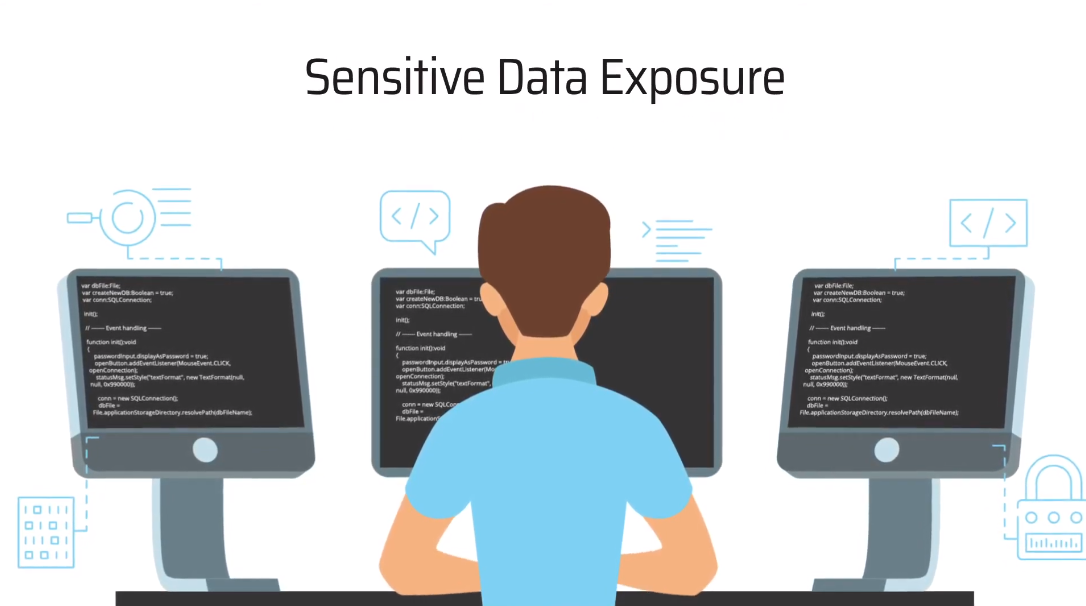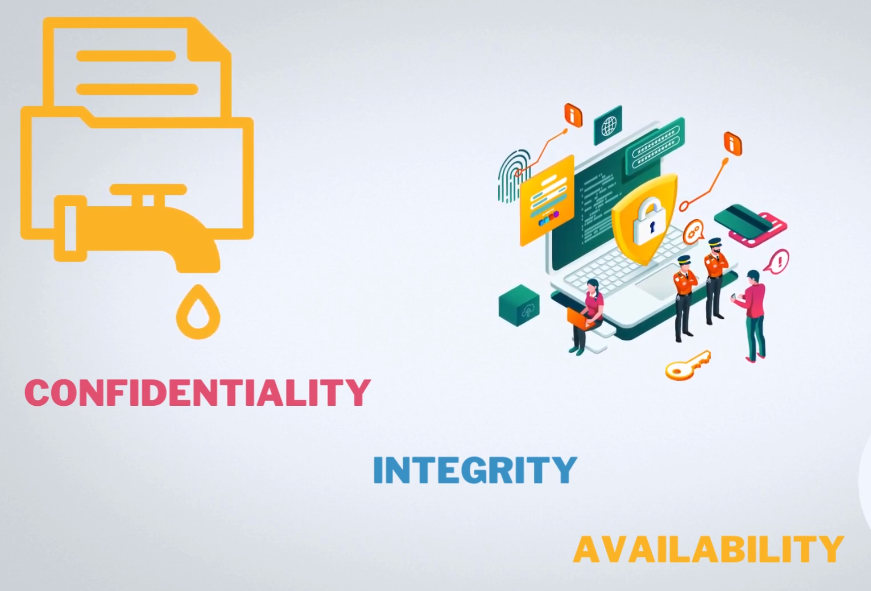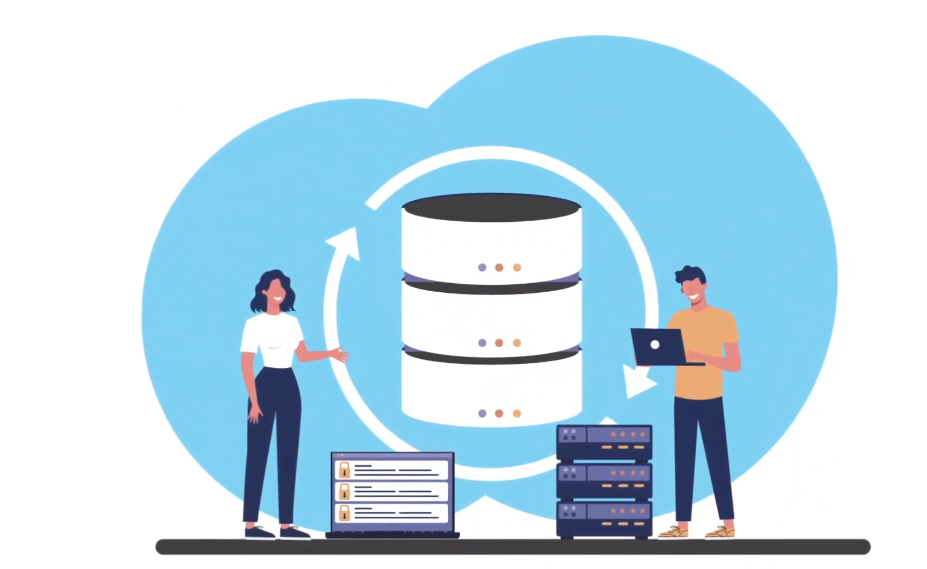Introduction
Data security controls are a set of measures that are designed to safeguard sensitive information from unauthorized access, theft or damage. The primary objective of data security controls is to protect the confidentiality, integrity, and availability of data.
The importance of data security controls cannot be overemphasized in today’s digital age, where cyber threats have become more sophisticated and frequent. Data breaches can result in significant financial losses, reputational damage, legal liabilities and loss of customer trust. Effective implementation of data security controls ensures compliance with regulatory requirements such as GDPR, HIPAA or PCI DSS.
Understanding Data Security Controls
Definition Of Data Security Controls
Data security controls include a range of technical, administrative and physical controls designed to protect sensitive information from cyber threats and other security breaches.
- Technical controls are implemented through software or hardware mechanisms such as firewalls, encryption technology, intrusion detection systems (IDS), access control lists (ACLs), and antivirus software to protect against unauthorized access by hackers.
- Administrative controls refer to password management protocols, background checks for new hires and cybersecurity training programs.
- Physical controls use devices such as biometric authentication systems or surveillance cameras to limit physical access to sensitive areas within an organization.
Administrative Controls
Explanation Of What Administrative Controls Are
Administrative controls are an integral part of data security measures implemented by organizations to safeguard their confidential information. These controls involve policies, procedures, and guidelines that govern access to sensitive data and determine how it should be handled.
The primary objective of administrative controls is to ensure that the organization’s data security policies are followed at all levels of the hierarchy. These policies aim to identify potential risks and vulnerabilities in the system and outline strategies for mitigating them.
Examples Of Administrative Controls
Examples of administrative controls include employee training programs that educate staff on handling sensitive data. These access control policies restrict access to confidential information only to authorized personnel and incident response plans that outline the steps an organization should take in case of a breach. Other administrative controls may include regular audits or risk assessments to identify potential vulnerabilities in the system and determine areas where improvements can be made.
Technical Controls
Explanation Of What Technical Controls Are
Technical controls are measures designed to protect computer systems and networks from unauthorized access, alteration, or destruction. These controls can be implemented through hardware, software, or firmware mechanisms and operate at the network, system, or application level.
The primary objective of data security controls is to ensure that sensitive information remains confidential, available only to authorized parties who have a legitimate need to know. Technical controls help organizations enforce security policies by preventing unauthorized access to critical resources or identifying suspicious activity that may indicate a potential threat.
Examples Of Technical Controls
Examples of technical controls include firewalls, intrusion detection systems (IDS), antivirus software, encryption tools, access control mechanisms such as biometric authentication and passwords, and network segmentation. Firewalls are a barrier between an organization’s internal network and external networks like the internet, preventing unauthorized access to sensitive data. IDS detects unusual activities on an organization’s network system by analyzing traffic patterns and notifying administrators of suspicious behaviour.
Physical Controls

Explanation Of What Physical Controls Are
Physical controls are a vital component of data security controls. They are designed to protect physical assets such as servers, laptops, and other hardware from unauthorized access and damage.
Physical controls can also help prevent natural disasters such as floods or fires from damaging critical assets that store important data. For example, fire suppression systems can be installed in server rooms to extinguish flames before they cause significant damage.
Examples Of Physical Controls
Physical security measures include locks, alarms, access control systems, biometric scanners, fences or barriers. Security and motion sensors also fall under this category as they monitor specific areas and detect any potentially unauthorized activity. Fire suppression systems like sprinklers or fire extinguishers also help mitigate damage in unexpected events like fires.
Importance Of Data Security Controls
Why Data Security Controls Are Important
Data security controls safeguard personal and confidential data against various security threats, such as hacking attempts, malware attacks, phishing scams, and insider breaches. They help organizations to comply with regulatory requirements regarding data privacy and protection. By implementing these controls, companies can mitigate the risk of legal liability due to data breaches or loss of sensitive information.
Furthermore, data security controls also enhance the reputation and credibility of an organization by assuring customers that their personal information is safe and secure. This can lead to increased customer loyalty and trust in the brand.
Risks Associated With Not Having Data Security Controls
Data breaches are one of the main risks of not having data security controls. A data breach occurs when a hacker gains access to confidential or personal information, such as credit card numbers, social security numbers, and other sensitive data. This can lead to identity theft, financial loss, and reputational damage for the affected company or organization.
Another risk associated with not having data security controls is non-compliance with regulations and legal obligations. Many industries have specific laws governing the handling of sensitive information; failure to follow these laws may result in hefty fines or legal action against the company. Additionally, businesses with inadequate data protection measures risk losing customer trust and loyalty if they experience a breach or fail to protect their customers’ private information.
Primary Objectives Of Data Security Controls

The primary objective of data security controls is to ensure the confidentiality, integrity, and availability of information. These objectives are important because they protect sensitive information from unauthorized access, modification, or destruction.
Confidentiality
Confidentiality refers to the protection of sensitive information from unauthorized access, theft or disclosure. Data confidentiality ensures that only authorized personnel can access and use confidential information such as financial records, customer data, intellectual property and other important documents.
Organizations implement security measures such as firewalls, encryption techniques and access controls to ensure confidentiality. These security measures help prevent unauthorized access to confidential information by ensuring that only authorised people can view or modify it. In addition to technical safeguards, policies and procedures also play an important role in maintaining confidentiality.
Effective confidentiality policies should outline how confidential information will be handled throughout its lifecycle within the organization. This includes procedures for securely creating, storing, sharing and disposing of confidential data. By implementing these policies and procedures and technical security controls, organizations can protect their valuable assets from harm while building trust with customers who entrust them with their sensitive information.
Integrity
The primary objective of data security controls is to ensure that the information stored and processed by an organization is accurate, complete, and trustworthy. Data integrity can be compromised by various factors such as human error, system failures, cyberattacks, or malicious insiders. Therefore, implementing appropriate data security controls is essential to maintain the integrity of critical business data.
Data integrity can be maintained through various techniques such as encryption, access controls, backups, and monitoring tools. Encryption ensures that the information remains confidential and cannot be intercepted or modified during transmission. Access controls limit who has permission to view or modify the data based on their role or privileges. Regular backups are essential to recovering lost or corrupted data from system failures or disasters. Monitoring tools help detect any suspicious activity that could compromise the integrity of the data.
Availability
Availability refers to ensuring authorized persons have access to data whenever needed. This means preventing disruptions or outages that could cause downtime and prevent users from accessing critical information.
The primary objective of availability controls is to minimize the risk of service interruptions or downtime by ensuring that systems are always up and running. This includes redundancy, failover mechanisms, load balancing, and disaster recovery plans. By implementing these controls, organizations can ensure employees have uninterrupted access to the resources they need to perform their jobs effectively.
Availability also plays a critical role in meeting regulatory compliance requirements such as HIPAA and PCI DSS mandated. These regulations require organizations to implement specific measures to ensure the availability of sensitive data at all times to protect patient privacy and financial transactions.
Best Practices For Data Security Controls
Tips For Effective Data Security Control Implementation
Conduct regular risk assessments. This helps identify potential risks and vulnerabilities in the systems that process or store sensitive information.
Implement role-based access controls. Only authorized personnel can access sensitive information based on their job responsibilities.
Educate employees. It’s crucial to educate employees about the importance of data security and train them on how best to prevent data breaches through safe practices like strong passwords and two-factor authentication methods.
Common Mistakes To Avoid When Implementing Data Security Controls
One common mistake organizations make is failing to conduct a thorough risk assessment before implementing security controls. Without a comprehensive understanding of potential threats and vulnerabilities, it is difficult to determine which control measures will be most effective in protecting sensitive information.
Another mistake is an overreliance on technology-based solutions such as firewalls and antivirus software without considering other important factors such as employee training and physical security measures. While technology-based solutions are important components of an effective data security strategy, they should be part of a broader approach that includes policies and procedures for managing access to sensitive information.
Evaluating Data Security Controls
Businesses can evaluate their data security controls by conducting regular audits. Audits help identify areas where vulnerabilities exist and highlight any shortcomings in current control methods. This allows for remedial action to be taken quickly before a breach occurs. Additionally, monitoring access logs and activity reports can help detect suspicious behaviour and ensure that only authorized users can access sensitive information.
It is important to keep up with evolving technology trends and updates in security protocols. Hackers are constantly finding new ways to breach systems; therefore, organizations must evolve their security measures accordingly. Regularly updating software systems and hardware devices ensures they remain secure against new threats.
FAQs
What Is The Most Important Objective Of Data Security Controls?

The primary objective of data security controls is to protect sensitive information from unauthorized access, use, disclosure or modification. Data security controls are designed to mitigate risks associated with cybercrime and protect sensitive information from external threats such as hackers, viruses and malware. Additionally, they also help prevent internal threats such as human error or malicious insiders who may intentionally or unintentionally compromise the confidentiality, integrity and availability of data.
How Can I Implement Effective Data Security Controls?
Organizations need to identify the types of sensitive information they handle to implement effective data security controls and determine their risk level. This helps them determine which security measures are most appropriate for different types of information. These measures may include access controls, encryption, firewalls, intrusion detection systems (IDS), and active monitoring.
Organizations should also establish policies and procedures for handling sensitive information throughout its lifecycle. This includes guidelines on who can access it, how it should be stored or transmitted securely, how it should be disposed of securely once no longer needed. Regular training sessions are required so employees understand their role in keeping confidential information safe from unauthorized access or breach via phishing attacks or other cyber threats as well as physical thefts within company premises or endpoints like mobile devices containing valuable business intelligence.
How Often Should Data Security Controls Be Evaluated?
Organizations should periodically assess their data security controls using a risk-based approach that considers potential threats and vulnerabilities. For instance, critical systems that process or store sensitive information may require more frequent evaluations than less critical ones.
What Are The Most Common Mistakes To Avoid When Implementing Data Security Controls?
One common mistake is assuming that all employees understand the importance of data security. This leads to a lack of training and awareness programs for employees which can result in careless handling of sensitive information. Another mistake is using weak passwords or relying on default credentials for access control. Hackers often exploit this vulnerability to gain unauthorized access.
Many businesses fail to regularly update their software and systems leaving them vulnerable to known exploits which could have been otherwise prevented with regular updates. Being aware of these common mistakes while implementing data security controls can help organizations avoid costly data breaches while ensuring the privacy and safety of their customers’ sensitive information.
Conclusion
The primary objective of data security controls is to protect sensitive information from unauthorized access and usage. It is essential in today’s digital age, where hackers and cybercriminals can easily compromise information. Data security controls protect against these threats, ensuring that confidential data remains safe.
Furthermore, data security controls also help organizations comply with regulatory requirements related to data privacy and protection. Compliance with these regulations ensures that an organization avoids legal penalties and helps build trust with customers who entrust them with their personal information.
